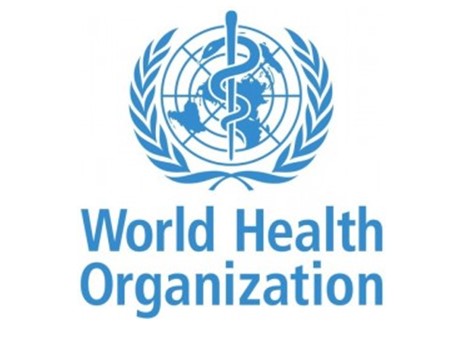Insecticide-treated nets (ITNs) have been a cornerstone of malaria prevention efforts over the past 2 decades, and their widespread use has been instrumental in preventing the disease and saving lives. Since 2000, the global malaria response, including through ITN distribution campaigns, has helped prevent more than 2 billion cases and nearly 13 million deaths.
Despite progress, malaria-transmitting mosquitoes in many areas have developed resistance to the insecticides commonly used on ITNs – especially pyrethroids – reducing their impact and undermining gains in malaria prevention. This rising threat has prompted researchers to accelerate the development of new types of nets that offer more durable protection against malaria.
In 2017, WHO recommended the first ITN designed to enhance efficacy against pyrethroid-resistant mosquitoes. While this marked an important step forward, further innovation was needed to develop dual-insecticide nets, assess their efficacy in managing resistant mosquitoes and their impact on malaria transmission, and to evaluate their cost-effectiveness.
This photo story, published ahead of World Malaria Day 2025, highlights the research, development and scale-up of dual-insecticide ITNs – made possible through years of collaboration among countries, communities, manufacturers, funders and a range of global, regional and national partners.
Global partnership launches extensive studies to test dual-insecticide nets
In 2018, Unitaid and the Global Fund launched the New Nets Project. Led by the Innovative Vector Control Consortium – and working closely with National Malaria Programmes and other partners such as the U.S. Presidents Malaria Initiative, the Gates Foundation and MedAccess – the project supported evidence building and pilots to rapidly accelerate the shift to dual-insecticide nets in sub-Saharan Africa to counter pyrethroid resistance.
The nets were first deployed in 2019 in Burkina Faso, and then Benin, Mozambique, Rwanda and the United Republic of Tanzania were added in subsequent years to test how the nets performed in different settings.
By the end of 2022, the New Nets Project, together with the Global Fund and U.S. President’s Malaria Initiative deployed more than 56 million mosquito nets in 17 countries across sub-Saharan Africa where insecticide resistance had been reported.
Clinical trials and pilot studies found that dual-insecticide nets improved malaria control by 20–50% compared with standard pyrethroid-only nets. Additionally, clinical trials in the United Republic of Tanzania and Benin demonstrated that the pyrethroid-chlorfenapyr nets significantly reduced malaria infections in children between the ages of 6 months and 10 years.
“The New Nets Project significantly advanced malaria control by accelerating access to dual active ingredient nets, an important tool in the fight against malaria,” said Dr Philippe Duneton, Executive Director of Unitaid. “The success of this initiative is the result of strong partnerships that helped us overcome access barriers and reach communities faster. Together with our partners, we continue working to explore and support innovations that reduce malaria transmission and save lives.”
The New Nets Project also included research universities, such as Tulane University and the London School of Hygiene&Tropical Medicine; advocacy organizations such as PATH, Population Services International (PSI) and the Alliance for Malaria Prevention; and funding from the U.S. Agency for International Development (USAID) and the Gates Foundation.
WHO issues recommendations for new generation nets
With strong clinical trial and study results, WHO issued recommendations for new generation insecticide-treated nets and updated the WHO guidelines for malaria in 2023. The WHO recommendations covered 2 new classes of dual ingredient ITNs: pyrethroid-chlorfenapyr nets and pyrethroid-pyriproxyfen nets.
Pyrethroid-chlorfenapyr nets combine a pyrethroid and a pyrrole insecticide to enhance the killing effect of the net and pyrethroid-pyriproxyfen nets combine a pyrethroid with an insect growth regulator (IGR), which disrupts mosquito growth and reproduction.
Wider scale-up of new generation nets poised to lower disease burden
Today, malaria-endemic countries and families are recognizing the value of new generation nets in preventing malaria and saving lives. In 2023, nearly 80% of nets delivered in sub-Saharan Africa were these more effective dual-insecticide nets, up from 59% in 2022, according to the latest World malaria report.
“In 2019, we used to have malaria frequently before we got the nets,” says Elizabeth, a tailor and mother of two young children in the United Republic of Tanzania. “It cost us a lot of money because sometimes we used to go to private hospitals.”
Since receiving the new generation nets, Elizabeth’s family has stayed free of malaria. “The difference now is that I don’t use the money to treat my child for malaria,” she adds. “Instead, I use the money to pay for school fees.”
To date, dual-insecticide nets are being used and scaled up in 17 countries in Africa. The rapid scale-up of the new nets and other innovative tools, such as malaria vaccines, offer fresh hope for controlling malaria, especially in countries with the highest risk of the disease.
“Dual-insecticide nets represent a breakthrough in malaria prevention,” notes Dr Daniel Ngamije, Director of the WHO Global Malaria Programme. “Their development and wide deployment are a testament to what can be achieved through science, sustained investment and global collaboration.”
Sustained investment in innovations critical to curbing malaria
Strengthening surveillance, monitoring and management of biological threats – such as insecticide resistance, invasive species and changing vector behaviour – will be essential to curb and, ultimately, eliminate malaria transmission. At the same time, investment in innovative tools to address these evolving challenges remains equally critical.
Scaling up the deployment and monitoring of next-generation nets, vaccines and other innovations will require sustained investment in malaria control and elimination programmes. This includes securing successful replenishments for the Global Fund and Gavi, the Vaccine Alliance.
In addition to new nets, researchers are pursuing a range of innovative vector control products, such as spatial repellents, lethal house lures (eaves tubes) and genetic engineering of mosquitoes.
Distributed by APO Group on behalf of World Health Organization (WHO).


